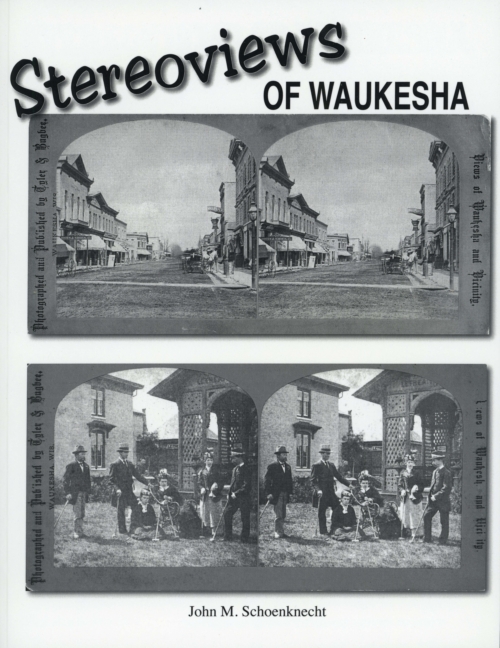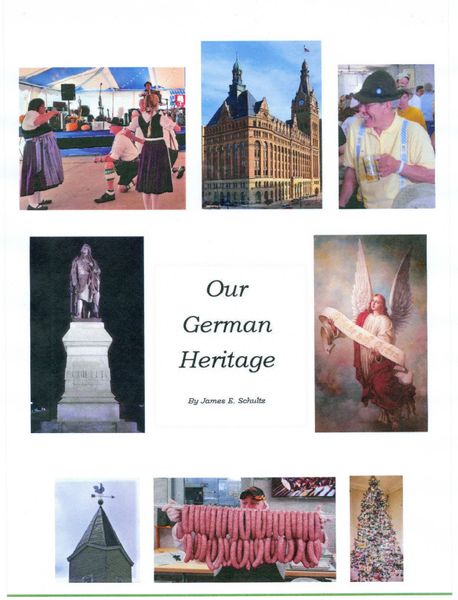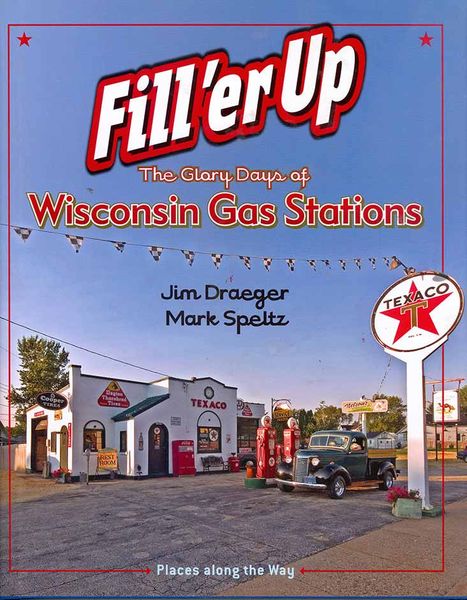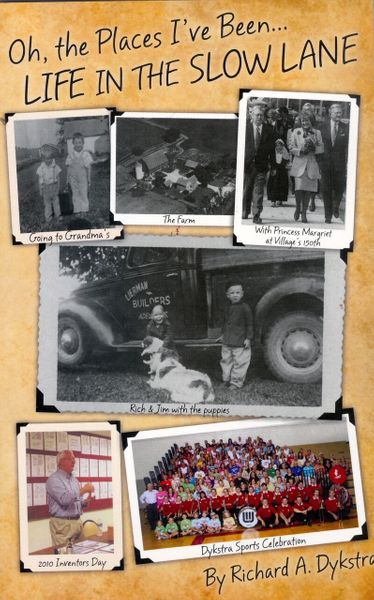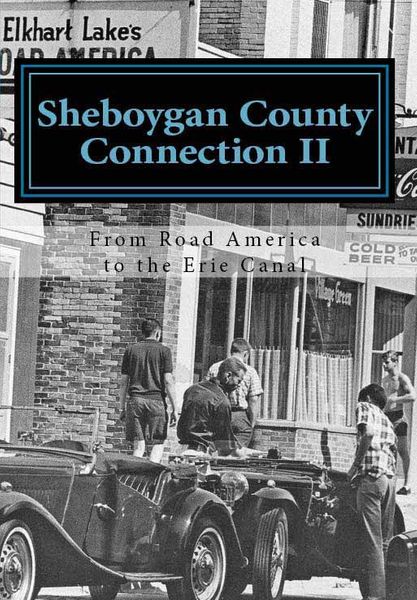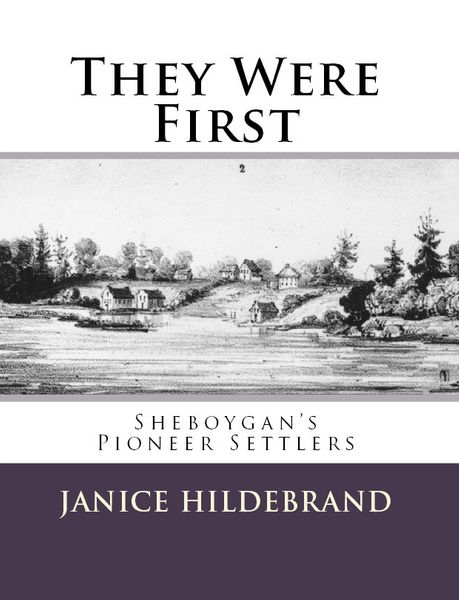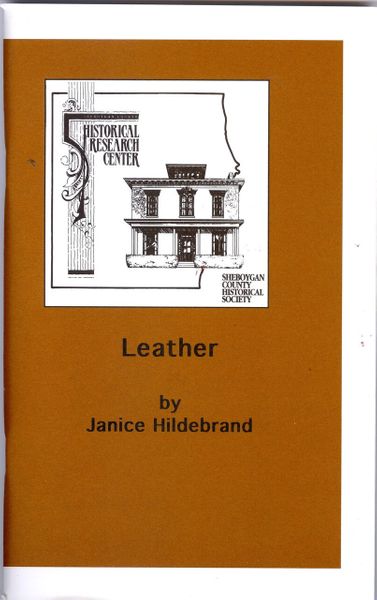-
By James E. Schultz. More than a history about Schultz's great grandparents, this book features:
- threads of our German heritage, including food, wine and beer, language, religion, music, dance, and customs woven into the family history and indexed;
- sections devoted to “Why they came”, “Today’s German Attitudes”, and “People and Places”;
- a “Special Find” for each of the eight featured ancestors, a genealogical gem that I uncovered;
- a wide variety of church, government, military, personal, and other resources, with a list of 40 resources cataloged as an appendix; and,
- a section called “Challenges, Tips, and Surprises” that provides helpful pointers for finding information.
-
By Edgar Harvey Jr.
This book deals with many of Ed Harvey’s predecessors as Sheboygan County Surveyors. Harvey, after years of research, found that they included men of great character, and others whom we could term “shysters”. They included some pretty unremarkable individuals and others of great genius. Although they were humble surveyors while they worked in Sheboygan County, some of these men invented great things, or were otherwise involved in major events which changed the history of the entire nation or the world. One man worked on the Brooklyn Bridge project. Another worked on the Panama Canal. At least two of these men prepared maps which shaped the boundaries of nations. With all the same care, the same men prepared surveys which depicted the boundaries of comparatively small, private properties in Sheboygan County; An interesting and fresh way of analyzing Sheboygan County History.
-
Sale!By Jim Draeger and Mark Speltz The authors visit 60 Wisconsin gas stations that are still standing today and chronicles the history of these humble yet ubiquitous buildings. The book tells the larger story of the gas station's place in automobile culture and its evolution in tandem with American history, as well as the stories of the individuals influenced by the gas stations in their lives.
-
By Rich Dykstra Rich is back with another series of short stories about life in the 1950s and 1960s. Life in the Slow Lane deals with seemingly mundane but very memorable activities that Dykstra participated in as a child – shopping trips to Sheboygan when it took a week or more of planning, going to the outhouse, Friday nights in Sheboygan Falls capped off with a stop at Bob’s Lunch, a one-room school fair, Sundays at Grandma’s, the anxious anticipation of a first Milwaukee Braves game, life in the era of polio and something called Sunday Rules.
-
This is the second volume in a series. It contains more than fifty stories about Sheboygan County citizens and the amazing ways they participated in important history. Topics range from the 1950s bomb shelter scare to the opening of Road America and Clif Tufte to the opening of the Erie Canal in the 1830s.
-
By Janice Hildebrand This book is a tribute to the City of Sheboygan in its sesquicentennial year 2003. The area that is now the city was settled years before 1853, but the city was not chartered until then. This book documents 45 men and women who were important in Sheboygan's early years. Each bio contains one or more photos. 2016 reprint.
-
Sale!By Elmer Koppelmann The citizens of Sheboygan County have always gone above and beyond the call of duty in times of military need; the Second World War was no different. Some 3000 young men and women served during World War II on all fronts and in all capacities from this county alone. Recorded here, after eighteen months of searches and interviews, are vignettes of 234 soldiers- one young woman and 233 young men from the Sheboygan County area who lost their lives. Four others- Joseph J. Archbold, Elmer C. Prahl, Roland Thompson, and Douglas Thornberg are noted as making the ultimate sacrifice, but regrettably, no information was found other than their names.
-
By Emma Hermann Thieme NO LONGER AVAILABLE -- OUT OF PRINT Sophie Hermann Knop was born and raised in Schaefer, Russia, a German-Russian community along the Volga River. In 1923, when she was 18 years old, Sophie traveled to Sheboygan, Wisconsin, where Gottlieb Hermann, had been living since 1912. During their long separation, Sophie endured great difficulties, including the Russian Revolution and the upheavals and famine that followed in its wake. Sophie willingly shared detailed descriptions of her life in Russia. Those “bits and pieces” follow a brief history of German migration to the Volga River area of Russia.
-
By Jerry Apps The barns of Wisconsin are history books in red paint, sociology with gabled roofs, theology with lightning rods. In many ways barns are Wisconsin agriculture nailed together in buildings with cupolas on top. This revised edition was printed in 2010 and filled with beautiful images.
-
Sale!By Richard A. Dykstra Here are thirty additional stories about growing up in rural Sheboygan County. Two favorite chapters are “The Airport” and “The Ice Box.” In the first you will appreciate the gullibility of children and in the second you will want to check Dykstra’s nose to see, if like Pinocchio, it has grown a foot or two. Besides the silly and nonsensical stories there are those with a much deeper meaning as in “Revisiting the Gift,” “Three Conversations with Dad” and “Grandma’s Quiet Life.” Dykstra's appreciation of family shines through the pages of all of his books.
-
By Janice Hildebrand In Sheboygan County there was a lively trade with the Indians for deer hides and other animal skins. Barter with the Indians brought the first traders to the county in the early 1800s. The tanneries of the county were an offshoot of the fur-trading days and were among the first clothing-related businesses to get started in Sheboygan County. Everything from shoes to gloves to harnesses were made of leather. Follow the history of the leather business in the county.
-
Sale!This publication is a chronological account of the sister city relationship between Sheboygan, a city in the state of Wisconsin, and Esslingen am Neckar of Germany. These articles span the years 1967 to 2017. The stories are told by actual headlines, story excerpts, photographs, and informational pieces gathered through articles in the Sheboygan Press, publications in the archives of the Sheboygan County Historical Research Center and Mead Public Library. The articles selected are meant to include a brief history and highlights of special visits and envoys. It is impossible to include everything. Many photos were available, but individuals and dates were not identified so they were not chosen. In a world that began with cablegrams, western union, letters, then phone and fax, communication evolved with the technology of cell phones, emails, the internet and FaceTime. In the beginning, travelers’ postcards and letters often arrived after they returned home. The bulk of the written material was found before all of this new technology replaced the newspaper stories. Some years there was more material than others. During the 1990s and beyond information was in the hands of individuals, not printed publications.

